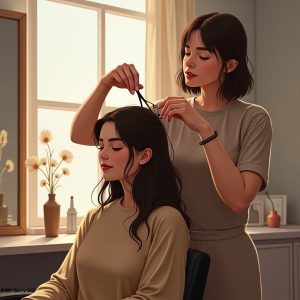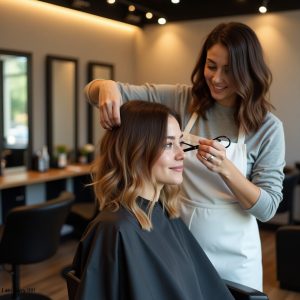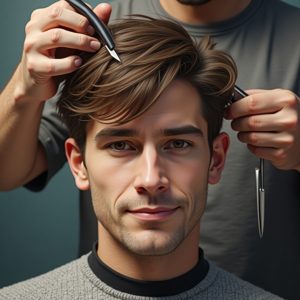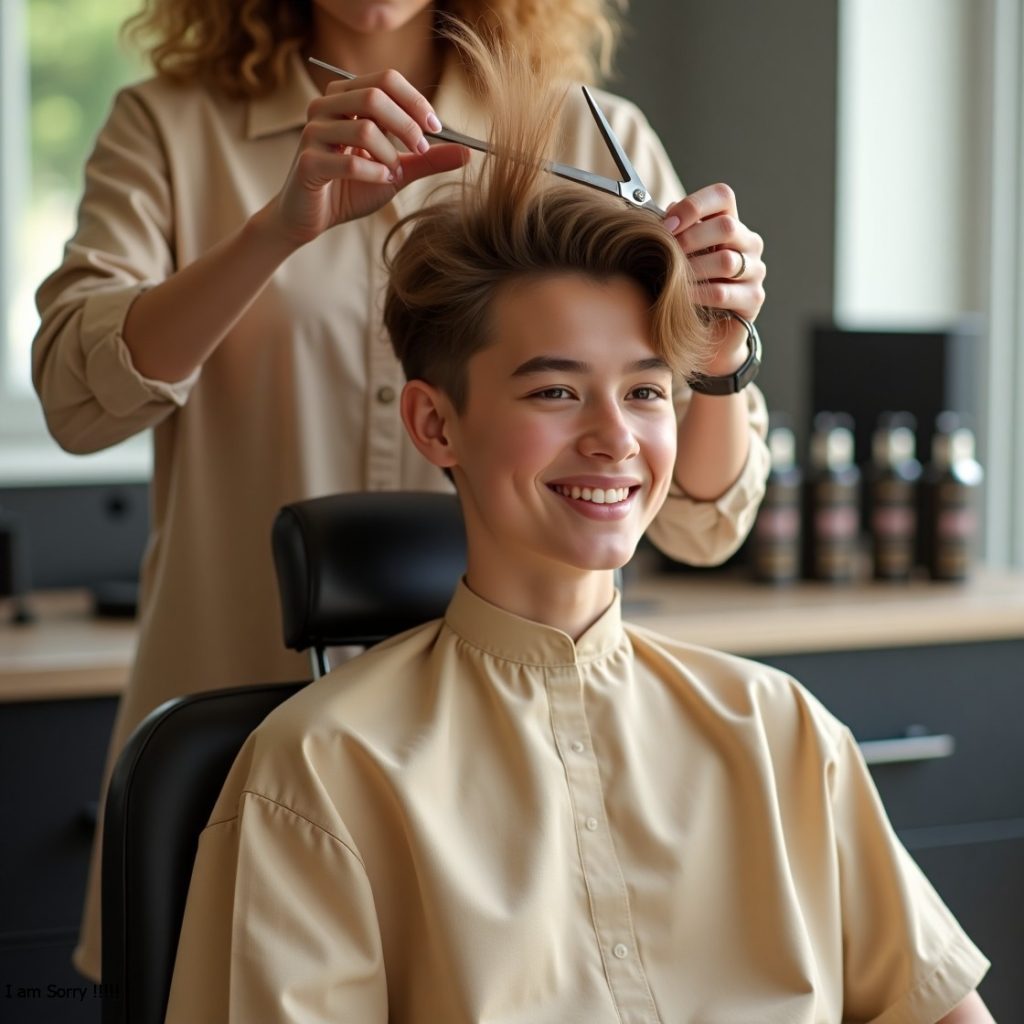Hair care
Hair care refers to improving the shape of the hair and scalp care through physical and chemical methods and expressing an attractive external image by managing and grooming the hair for healthy and elastic hair. This is one of the important elements of anyone’s self-management image, and with the development of media, it has become a means of expressing oneself and highlighting aesthetic aspects as a factor in changing one’s appearance.

It was argued that it is a behavioral tendency to manage one’s hairstyle through physical and chemical methods such as cutting, permanent waves, dyeing, and styling to create the attractive image one pursues. It is believed that the consumers’ behavior, different based on each consumer’s habits, would influence their choice of practitioner. To determine behavior based on consumer habits, this research would classify the subdimensions as aesthetic hair pursuit behavior, hair care contribution behavior, hair care attitude behavior, and hair care contribution behavior.
Selection attribute refers to selecting a worker to purchase one of the important decisions of a consumer, such as a product or service. In the decision-making process of selecting a worker, the consumer’s desire or expectation of the worker becomes the standard for evaluating the worker, and the consumer decides which worker to purchase by comparing his or her evaluative standards and perceptual characteristics.
Currently, in terms of sex and age, maintaining one’s physical health and beautiful appearance is a service that improves the quality of an individual’s life and desires and the quality of his or her life. In contemporary society, the consumer refers to various factors while selecting workers according to their style. According to the study, it is determined that the personality or atmosphere one pursues is discovered and selected from employees, and by reconstructing the components of Kim, the sub-factors of beauty salon workers’ selection attributes were divided into review preference, career preference, image preference, and time preference.
Process
Aesthetic hair seeking behavior, hair care attitude behavior, and shop travel behavior, which are sub-factors of hair care behavior, were found to have a statistically significant impact on the review preference factor is a sub-factor of worker preference, and aesthetic hair care behavior, Hair seeking behavior, hair care attitude behavior, and hair care travel behavior variables had an explanatory power of 31.6% in predicting the review preference factor.
Looking at the influence of the independent variables, it was found that they had a significant positive influence in the following order aesthetic hair pursuit behavior, hair care travel behavior, and hair care attitude behavior. This means that as aesthetic hair-seeking behavior, hair care attitude behavior, aesthetic hair care behavior, hair care, hair care centers, increase review preference also increases.
Hair care management behavior, hair care attitude behavior, and attitude behavior are sub-factors of hair care behavior, which were found to have a statistically significant impact on the career preference factor, which is a sub-factor of employee preference. The management attitude behavior variable has an explanatory power of 17.0% in predicting the career preference factor.
Hair care attitude behavior, and hair care travel behavior, which are sub-factors of hair care behavior, were found to have a statistically significant impact on the procedure satisfaction factor, which is a subfactor of customer satisfaction, and aesthetic behavior, Hair seeking behavior, hair care attitude behavior, and hair care travel behavior variables were found to have an explanatory power of 24.6% in predicting treatment satisfaction factors.

With regards to the impact of the independent variables, there was a highly significant positive impact in the following order: aesthetic hair pursuit behavior, attitude behavior, and hair care travel behavior. It means that when aesthetic hair-seeking behavior, hair care attitude behavior, and movement toward hair care centers increase, treatment satisfaction will also increase.
Impact of Selection Characteristics of beauty shop workers on the Level of customers’ satisfaction
Time preference and picture preference, sub-variables under the variable of employee preference are also found to be statistically influential to the process satisfaction variable which is also a sub-variable of customer satisfaction. The results revealed that these variables of image preference and time preference affected procedure satisfaction.
Analyzing the independent variables, time preference was found to have a significant positive influence on order and image preference. This implies that as image preference and time preference increase, treatment satisfaction increases too. The time preference and image preference of an employee two sub-factors of the latter have shown significant impact in having a value to facility satisfaction factor as a sub-factor under the heading customer satisfaction. Thus, image preference and time preference were variables in these variables that influence facility satisfaction.
The former possessed explanatory power of 13.4% while it was predicted. Influence of independent variables In the influence of independent variables, time preference is found to have a positive influence on order and image preference. This simply means that the more the increase in image preference and time preference, the greater the facility satisfaction. It was found that image preference and time preference, which are subfactors of employee preference, have a statistically significant impact on the service satisfaction factor, which is a sub-factor of customer satisfaction. The image preference and time preference variables influenced the service satisfaction factor, and it had an explanatory power of 21.6% in prediction.
The influence of the independent variables was observed, and time preference was found to have a significant positive influence on order and image preference. This implies that as image preference and time preference increase, service satisfaction also increases. It was found that the effect of review preference, career preference, image preference, and time preference, which fall under the subfactors of employee preference, on the price satisfaction factor, which is one of the sub-factors of customer satisfaction, is statistically significant, and review preference along with career preference, image preference, and time preference variables had an explanatory power of 38.1% for predicting the price satisfaction factors.
It is seen that looking at the influence of the independent variables, they have shown a significant positive influence in that order review preference, career preference, time preference, heading customer satisfaction, image preference. This, therefore, states that as the review preference, career preference, image preference, and time preference increase, price satisfaction will also increase.

CONCLUSION
We verified the relationship between hair care behavior, beauty salon employee preference, and customer satisfaction. Based on research results, it is possible to identify factors that develop the correct aesthetic pursuit behavior concerning customers’ personality and preference for a beauty salon’s workers and consumer satisfaction and the basic data may be provided with which they will be applied to practice. However, the scope of this paper is as below.
First, because more consumers in the study do not visit regularly than there are consumers who visit regularly, generalizations may not be accurate. Second, since there is no designated hair salon and data on consumer satisfaction while traveling was collected together, results of worker preference may be limited.

